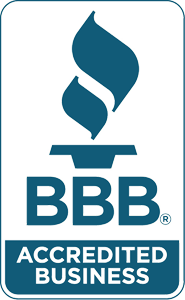Home Insurance Coverage — What Is Covered
Standard home insurance coverage policies provide the following types of coverage, up to the limits outlined in the policies:
Dwelling — Pays for damage or destruction to your house and any unattached structures and buildings, such as fences, detached garages, and storage sheds.
Personal Property — Covers the contents of your house, including furniture, clothing and appliances, if they are stolen, damaged, or destroyed.
Liability — Protects you against financial loss if you are sued and found legally responsible for someone else’s injury or property damage.
Medical Payments — Covers medical bills for people hurt on your property. Medical Payments coverage also pays for some injuries that may happen away from your home, such as if your dog bites someone.
Loss of Use — Pays for additional living expenses if your home is too damaged to live in during repairs. Most standard home insurance coverage pays 10 to 20 percent of the amount of your dwelling coverage.

You also can purchase the following optional home insurance coverages:
Guaranteed Replacement Cost — Provides the most complete coverage for your home. Your home insurance company requires you to meet specific underwriting rules and conditions to qualify for this coverage. For instance, you may need to increase your home insurance amount on a monthly, quarterly or yearly basis to keep up with the inflation rate.
Inflation Guard Endorsement — Automatically adjusts your home insurance limits during your policy period so they are at 80 percent or more of your home’s replacement cost, which is the amount most home insurance companies require you to have. This coverage is beneficial if your home’s replacement cost is increasing with inflation.
Scheduled Personal Property Endorsement — Also called a personal article floater. With this coverage, possessions, including jewelry, furs, stamps, coins, guns, computers, antiques, etc., are covered. Each article is itemized and detailed in the floater, and excluded perils also are outlined. Personal article floaters often do not have deductibles.
Increased Limits on Money and Securities — Increases coverage amounts for money, bank notes, securities, deeds and more.
Secondary Residence Premises Endorsement — Covers a secondary residence, such as a summer home. Insurance for secondary homes is not automatically provided by the home insurance policy you have for your primary or principal residence, so it’s important to consider this endorsement if you own more than one home.
Watercraft Endorsement — Expands personal liability and medical payments coverage for small sailboats and outboard motor boats only.
Theft Coverage Protection Endorsement — If items from your motor vehicle, trailer or watercraft are stolen, theft coverage protection broadens theft coverage without requiring proof of forcible entry.
Credit Card Forgery and Depositors Forgery Coverage Endorsement — Coverage applies if your credit cards are lost, stolen or used without permission, or if someone forges a check, draft, promissory note, etc. Certain restrictions apply and are noted in your home insurance policy.
Home Insurance Coverage — What Isn’t Covered
A standard homeowners policy may not protect you from:
Flood, Earthquake, Nuclear Accident and War — To protect against unforeseen and uncontrollable events like these, you can purchase hazard insurance through your home insurance policy.
Questions to Ask Before You Buy Home Insurance
Is flood insurance required, and what kind of flood insurance is available?
If you live in a flood plain and you have a mortgage, you may be required to have flood insurance. Depending on where your home is located, you may qualify for flood insurance through the National Flood Insurance Program. Some insurance companies also offer flood insurance. Keep in mind that your home could sustain flood damage by other means, such as broken pipes, even if it’s not located in a flood plain, so consider this coverage if you are eligible for it.
Is earthquake insurance available?
Most insurance companies offer earthquake insurance for an additional cost. This insurance generally is attached to your home insurance policy as an endorsement.
These are just a couple of the key questions to ask when purchasing home insurance. You may also consider water back-up, sump pump overflow, identity theft protection and other coverages that may be specific to your situation.

Insurance To Value – Homeowners
Properly protecting your single most important asset – your home.
Now that’s a big responsibility. Selecting the proper amount of coverage for your home is the single most important decision you can make with your homeowners policy. Without it, you may not have enough coverage to rebuild after a total loss. In the industry, this process is called insurance to value (ITV).
What is insurance to value?
Insurance to value (ITV) is the amount of coverage listed under ‘Coverage A’ on your policy declarations page. It is often referred to as “Dwelling coverage” or “Coverage A – Dwelling”. It refers to the amount required to completely reconstruct your home in the unfortunate event of complete destruction.
Why is insurance to value different than the value of my home?
A home’s market value reflects current economic conditions, taxes, school districts, the value of the land, location, and other factors that have nothing to do with the actual cost of rebuilding a home and replacing all of its contents. With ITV, you will have the proper amount of coverage to reconstruct your home – not what it was worth on the current market.
Why is reconstruction more expensive than new construction?
New-home builders typically build many homes at once, and bid out the jobs to receive the best pricing. Their business model is based on economies of scale. For example, they may purchase 20 bathtubs at once, securing a lower unit cost. Reconstruction cost for a single home is more expensive since there are no savings when buying just one replacement bathtub.
How Jim Hubbard Insurance can help.
Selecting the right ‘Coverage A’ amount is your responsibility. Sound like a big obligation? Luckily, Jim Hubbard Insurance is here to help. The companies we represent use industry leading underwriting tools to estimate what it would cost – including materials and labor – to rebuild your home from the ground up. Like any estimation this will not perfectly capture every specific building item in your home. You should use it as a starting point and add to it depending on your home’s specific features.
Follow these simple steps to help ensure your home is insured to full value.
- Provide detailed information at time of purchase to be sure that you receive a thorough and accurate quote.
- Ask us about additional coverage options that may be available.
- Review your insurance to value calculation on a regular basis with us.
- Report any changes or improvements that you make to your home to us so that you can re-evaluate your coverage needs.
Ephesians 4:32
Be kind to one another, tenderhearted, forgiving one another, as God in Christ forgave you.

